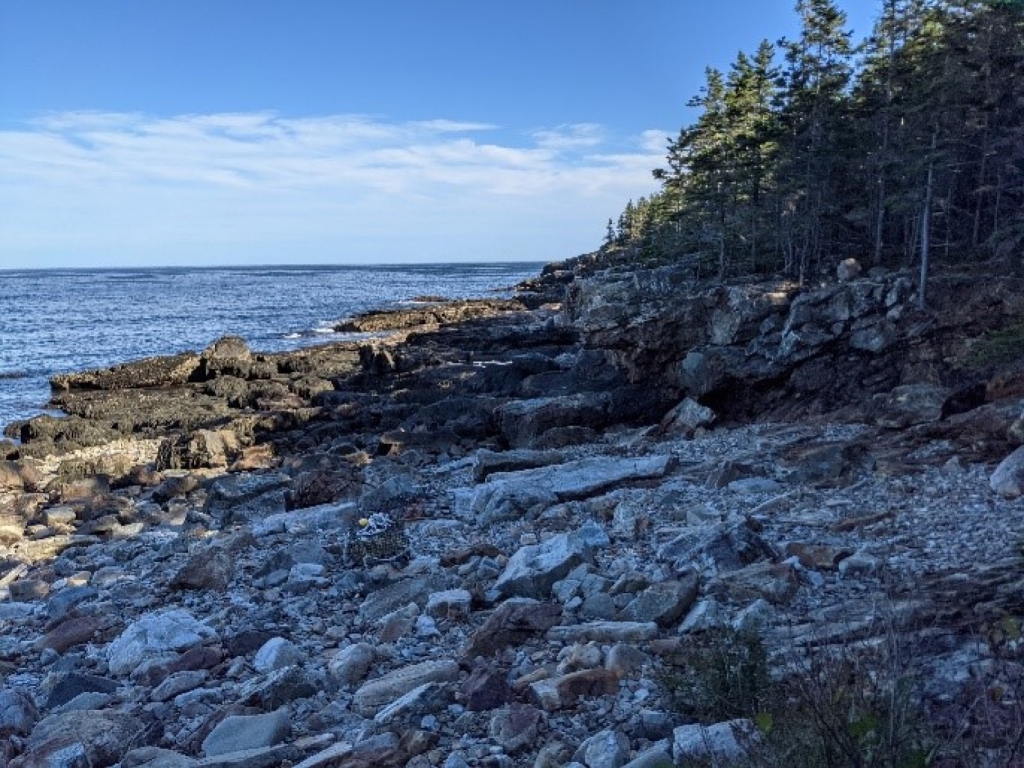
How does this cobble beach compare to Sand Beach, where this hike started? An easy difference to spot is in the names of the beaches: one beach is made of sand, and one beach is made of cobbles. In geology, these words are used to describe the size of pieces of rocks, also known as “grain size.” Grain size, in addition to grain roundness, help tell geologists about what kind of journeys rocks have been on.
At this cobble beach, we can observe the size and roundness of these cobbles to learn more about the beach. The cobbles are large, meaning that they haven’t moved very far. Because their size makes them heavy, it is difficult for waves to pick them up and take them somewhere else. The cobbles are also round, which tells us that they are being smoothed as waves carry them up and down the beach, rolling the cobbles against each other and knocking off any sharp or broken edges.
If we took a dump truck of sand from Sand Beach and poured it onto this cobble beach, it would wash away very quickly! This beach is not protected by any landforms and gets hammered with waves all day. Only the cobbles remain because their larger size makes them resistant to these strong waves. Because most of Acadia’s shoreline is exposed to direct waves, there are many other cobble beaches in the park – when you encounter cobble beaches, it’s important to leave the cobbles where you find them. It helps preserve the beach for future visitors to enjoy, lets cobbles stabilize the shoreline, and protects tiny ecosystems that live in the crevices of the rocks.
Is there something we missed for this itinerary?
Itineraries across USA


















































